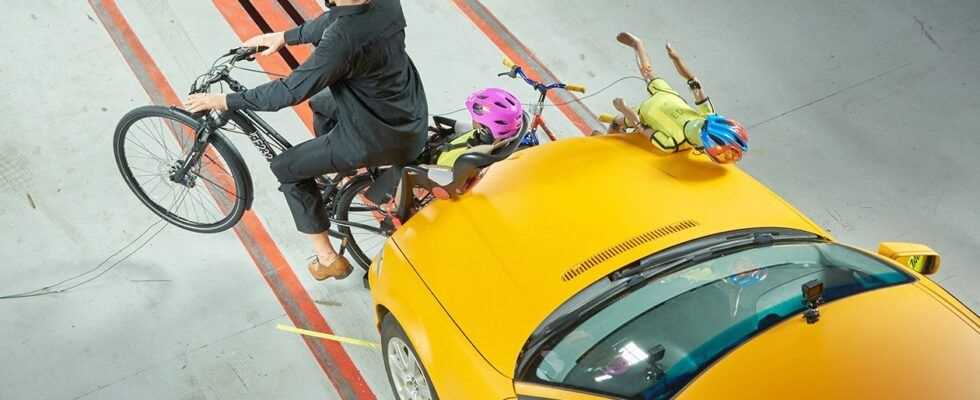In addition to the classic bicycle trailer, cargo bikes are particularly popular in big cities to transport children from A to B. But do these transport systems also offer the youngsters sufficient protection against injuries in the event of an accident? What about the handling and the comfort for the little ones? The ADAC compared five systems that allow two children to be transported.
On the test bench: three different types of cargo bicycles, a bicycle trailer, as a sprung and unsprung variant, as well as a trailer system including a child seat for the bicycle rack.
The focus was on the strengths and weaknesses of the individual systems in terms of handling, driving behavior, comfort and safety, including a side crash test with a car. The transport of two small children between the ages of 1.5 and 3 years, who were simulated using crash dummies, was tested.
During the crash test, an accident scenario was simulated in which a car drives into the stationary system at 30 km / h and an angle of 45 degrees.
The safest cargo bike
The best accident protection is offered by the “Backpacker” cargo bike variant, in which two child seats are mounted on the luggage rack. In the event of a collision with a car, the high seating position means that the children are not in the direct crash area. It is important that safe child bike seats are used – these must be purchased separately from the aftermarket.
The bicycle trailer still scores well because it protects the child with the belt fixation and the sturdy frame. Disadvantage of the bicycle trailer: The children sit very low, which means that they are in the direct impact area of the car.
In the case of systems with a transport box (two-lane cargo bike and single-lane cargo bike “Long John”), the box can protect the occupants when it comes into contact with the car. However, both systems were overturned in the test and slid across the road due to the smooth surface. There is a high risk here of a collision with oncoming traffic. In addition, individual belt and restraint systems failed in the event of a crash. The ADAC sees a lot of catching up to do with the manufacturers.
The back-up system performed worst in the crash tests. Since the child is unprotected on the attached children’s bike, hips and legs are hit directly in the event of a collision with the car. The dummy then hits the asphalt with his head. The ADAC advises: both drivers and passengers should always wear a helmet in order to reduce the risk of injury to the head in the event of an accident.
aum
